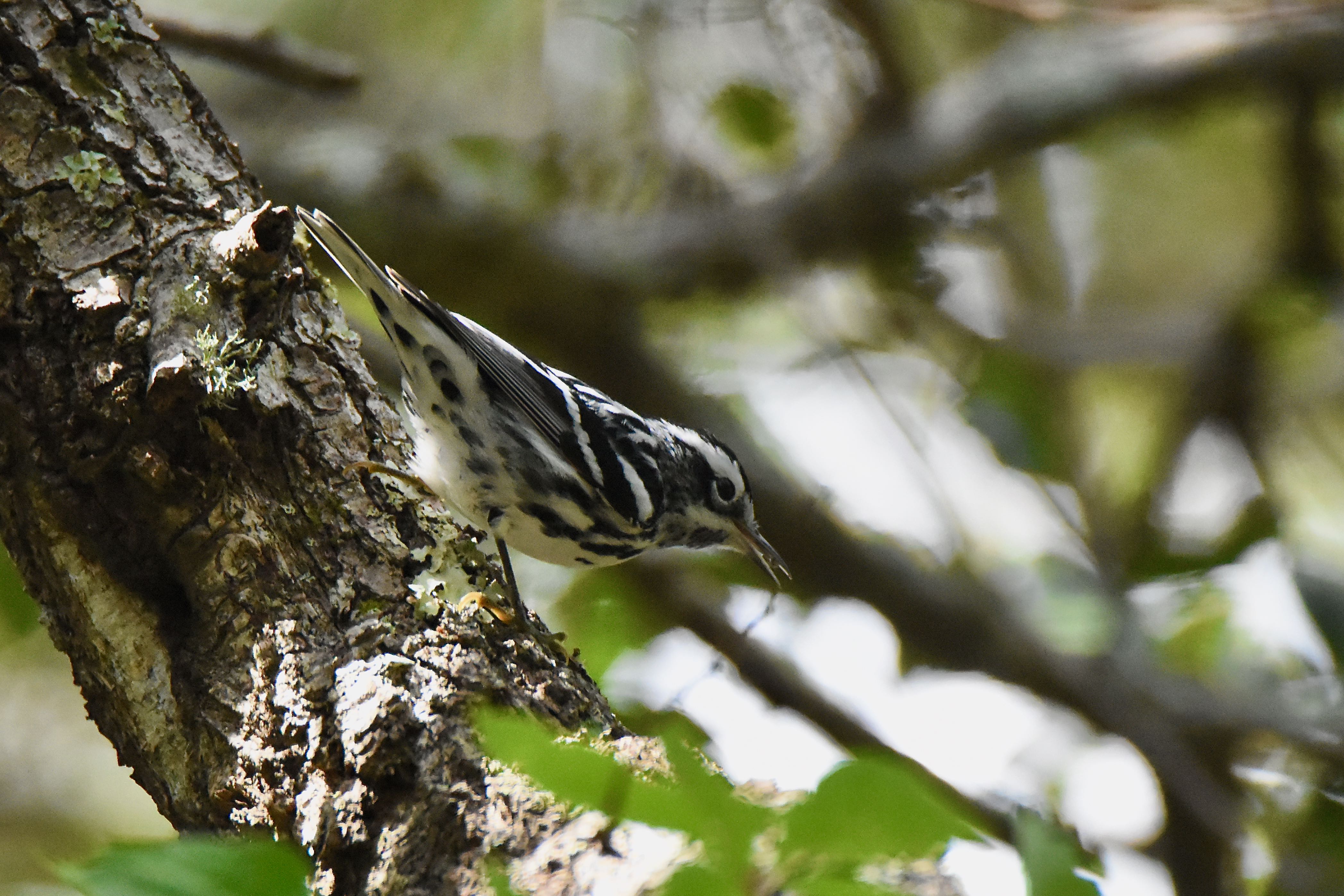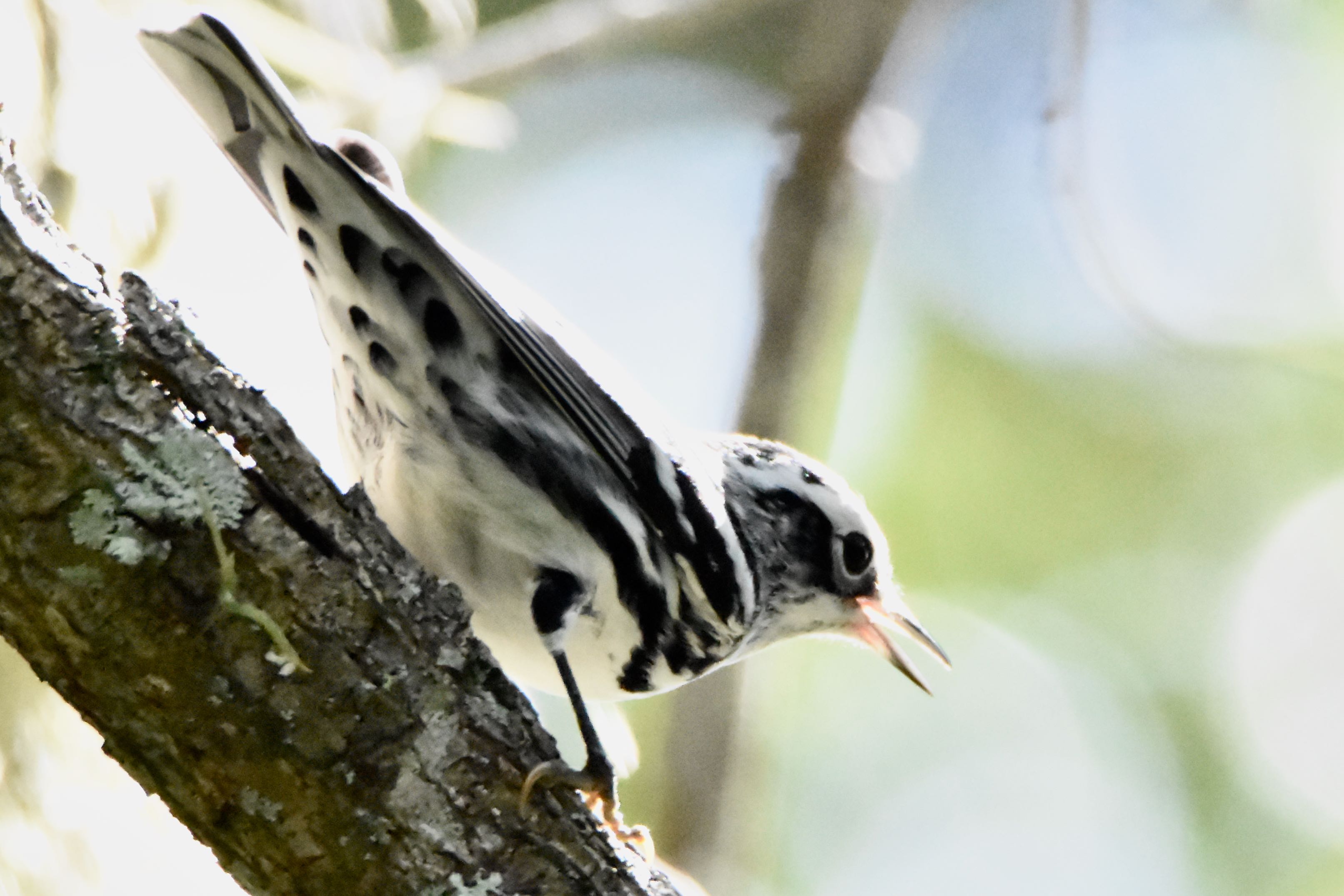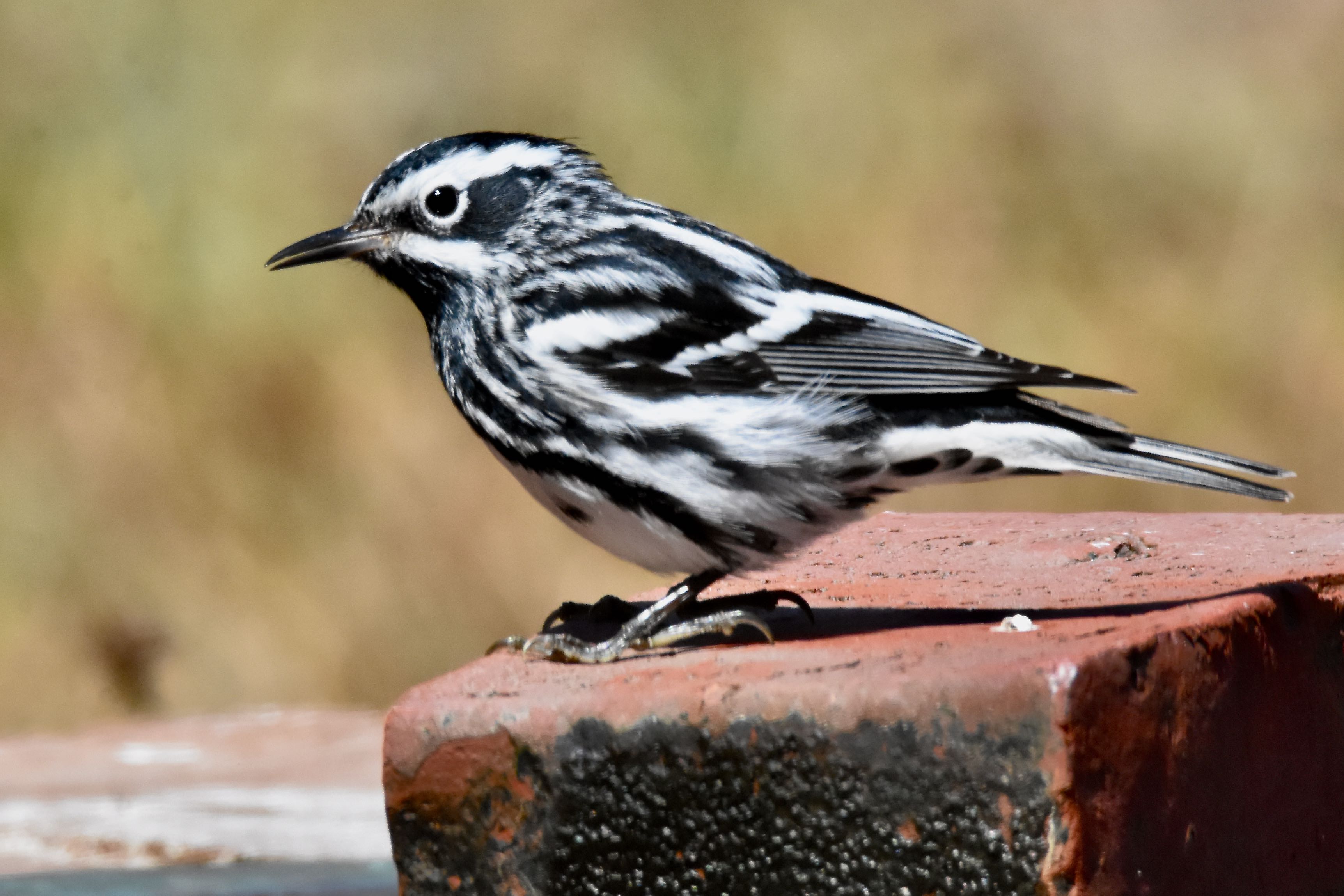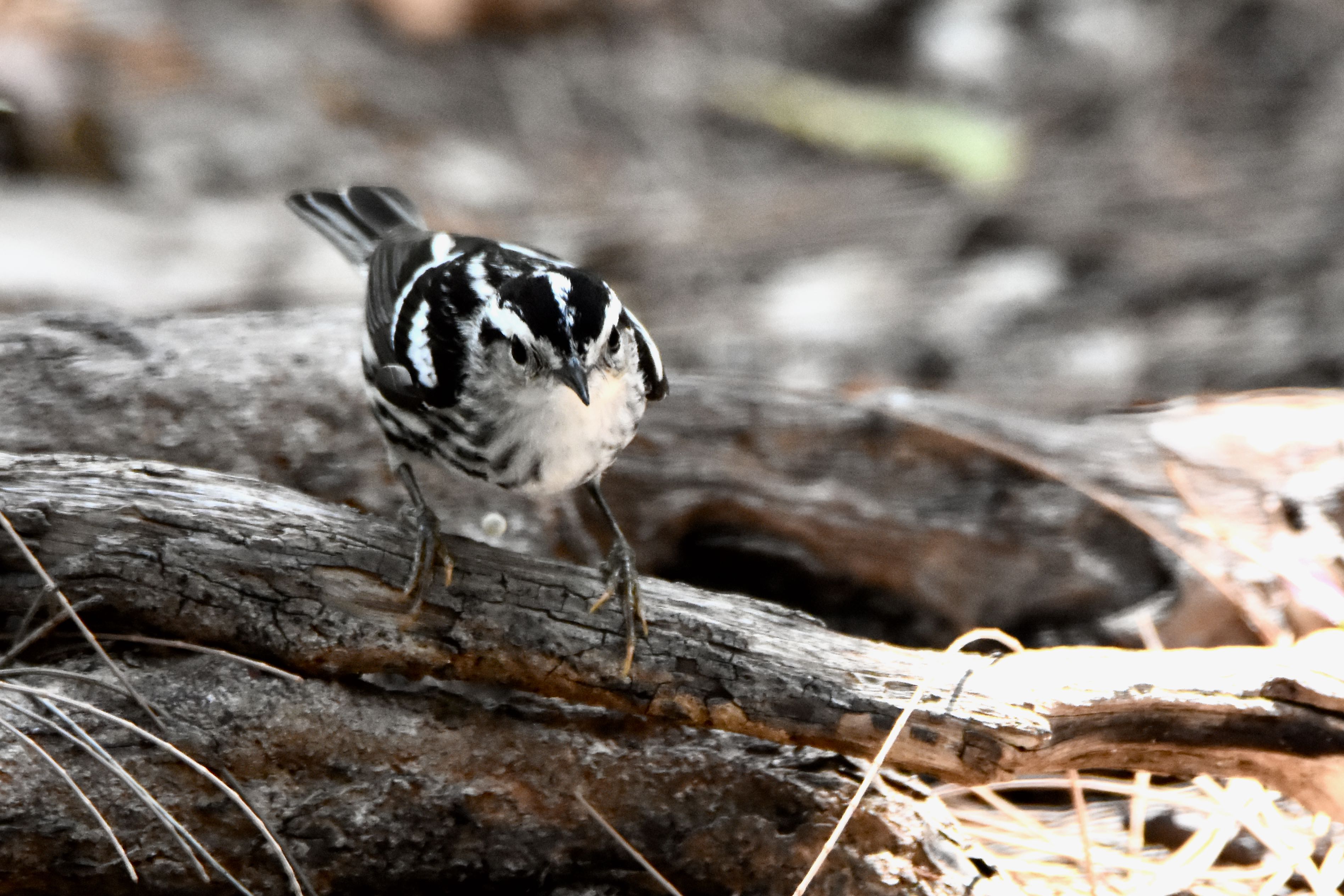
Black-and-white warbler, photographed at Frenchman's Forest Natural Area, Palm Beach Gardens, Palm Beach County, in April 2018.
Identifying the black-and-white warbler, Mniotilta varia, is as simple as black and white. Really. And if that isn't easy enough, it's habit of creeping up, down and around tree trunks and branches makes it even easier to finger.
The black-and-white is a winter visitor to South Florida. It's among the first to arrive in the fall — actually as early as mid-August — and among the first to depart in the spring. They are medium-sized as far as warblers go, with a body length measuring about five inches or less and a wingspan that approaches nine inches. Males and females are similar in size, but males are more boldly marked. The warbler that most closely resembles the black-and-white is the blackpoll, but it has a solid black "skull cap" that runs down to the eyes and bright orange legs. The blackpoll only makes pit stops here during migration and is most likely to be seen in spring.
During summer, black-and-whites are found as far north as Canada's Northwest Territories, eastward and down into the U.S. It migrates to coastal South Carolina through Florida, the Caribbean, Mexico and Central America, to parts of Colombia and Venezuela.
Forests and the edges of forests are their main habitat, but in migration and during the winter, black-and-whites can be found in a variety of places, including suburban and urban settings like parks, lawns and gardens, in wetlands, mangroves and forests.
Black-and-white warblers are insectivores. In plain language, they eat bugs, mainly beetles, ants, flies, spiders and others. During migration, they tend to munch on butterfly and moth caterpillars, including that invasive scourage of the Northeast, the gypsy moth. They do much of their foraging while creeping around trees, looking for a meal in the bark. They'll also visit sapsucker holes looking for bugs, and they will take a meal on the fly occasionally.
A look at the photos will tell you this is a bird built for a life in the trees. Black-and-whites have long toes and stouter legs than your average warbler, allowing them to creep about sideways and up and down as naturally as if they were on flat land.
In spring, males are the first to arrive at the breeding grounds after winter migration, staking out a territory. But it's the females who pick nesting sites and construct a cup-shaped "home" made of leaves, coarse grass and bark and lined with softer material, including fine grass and animal hair.
Females lay clutches of four to six eggs, which take 10 to 12 days to hatch. Females handle all of the incubation duties. Both parents share the job of feeding their offspring. But "childhood" is short for black and white warblers, even by bird standards. They leave the nest after only eight to 12 days even though they're not yet strong flyers. A pair can have two broods in a season. Other than nesting, this is a bird that rarely visits the ground.
Black-and-white warblers are extremely territorial, not just during breeding season like most territorial birds, but during the winter as well. They will defend their turf aggressively against other species and against their own kind. Black-and white-warblers generally are not rare birds but they can be difficult to spot because of their habitat. They are members of Parulidae, the wood warbler famly.
The International Union for Conservation of Nature rates the black-and-white warbler "least concern" on its extinction scale even though their numbers have decline sharply over the last 50 years. Threats include pesticides and loss of habitat. It is a nocturnal migrator and is susceptable to flying into buildings and other tall objects.They are the only members of their genus, Mniotilta, which means "to pluck from moss."
Frenchman's Forest Natural Area. Other photos taken at Jefferson Key, Dry Tortugas National Park.



